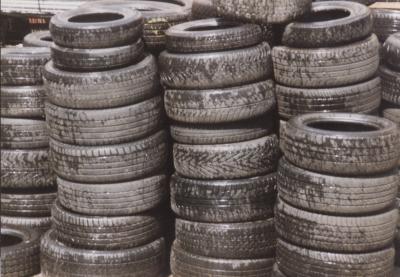). “There may also be further investigations into environmental effects too,” Fazilet Cinaralp, Secretary General of the European Tyre & Rubber Manufacturers’ Association, has stated. “This is expected to lead to the publication of an intention to restrict other substances in ELTs later in 2019.”
Ms Cinaralp was addressing the latest meeting of the BIR Tyres & Rubber Committee, chaired for the final time by Barend ten Bruggencate of RecyBEM BV in the Netherlands who agreed that “all our interest” is focused on what ECHA will say.
Latest statistics indicate that 75% of Europe’s ELTs destined for material recovery – equivalent to more than 1.4 million tonnes per annum – are channelled into granulation, for which end-use applications “remain a challenge”, she explained to delegates in London on October 7. Owing to recent adverse media coverage, “many outlets for rubber infill have closed” and a significant number of municipalities are declining to use it, she added.
Despite an industry coalition to promote the use of rubber infill, the market in America has dipped by perhaps 30% over the last two to three years owing to negative media reports of safety concerns – even though some 100 studies have concluded that no such safety risk exists, commented Robin Wiener, President of the US Institute of Scrap Recycling Industries (ISRI).
The results of a multi-agency US study into potential risks are expected in November this year and ISRI has called for “plain language” conclusions. US Congress has asked to see a copy of the final report prior to publication – evidence of “a recognition of the importance of this issue”. Ms Wiener was joined by ISRI’s Chair-Elect and tyre specialist Gary Champlin in underlining the need to “keep the focus on the science” rather than “letting emotion take over”.
In response to the current outlook for granulate in Europe, Ms Cinaralp insisted: “It is time to look for other markets.” She identified asphalt rubber as the outlet “with the most potential” and one which has already proved itself in the USA. “All the benefits of rubberised asphalt are known,” she insisted.
ISRI has promoted the environmental advantages of rubberised asphalt for many years in the USA, Ms Wiener pointed out. The US Congress is currently talking of infrastructure reform and ISRI has been joining with industry to “push for incentives for asphalt rubber”, she went on to say.









